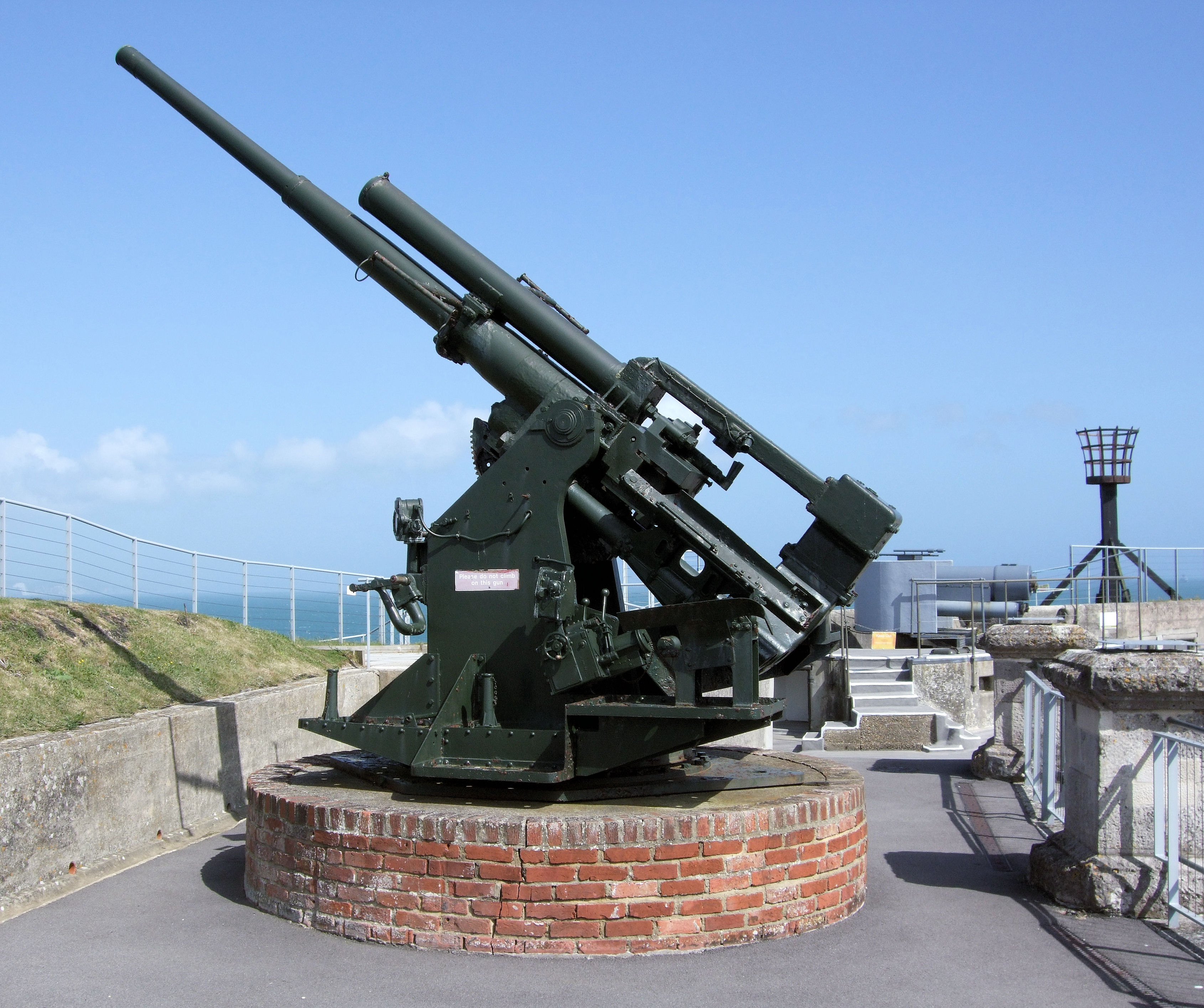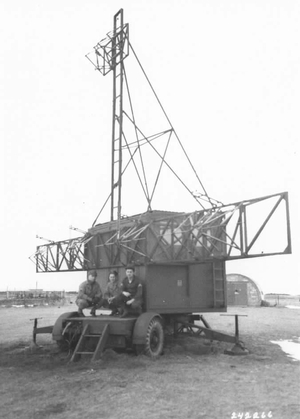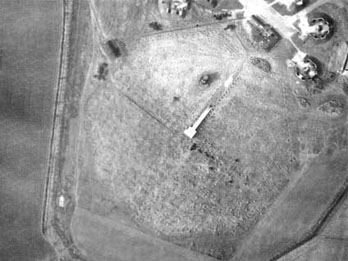359th Heavy Anti-Aircraft Battery, Royal Artillery on:
[Wikipedia]
[Google]
[Amazon]
The 359th Heavy Anti-Aircraft Battery, Royal Artillery (359th HAA Bty) was an air defence unit of the
/ref>
 At the beginning of 1942 the battery was firing at No 2 AA Practice Camp at Burrow Head, and then took over two gun sites at
At the beginning of 1942 the battery was firing at No 2 AA Practice Camp at Burrow Head, and then took over two gun sites at
British Army
The British Army is the principal land warfare force of the United Kingdom, a part of the British Armed Forces along with the Royal Navy and the Royal Air Force. , the British Army comprises 79,380 regular full-time personnel, 4,090 Gurk ...
during World War II
World War II or the Second World War, often abbreviated as WWII or WW2, was a world war that lasted from 1939 to 1945. It involved the vast majority of the world's countries—including all of the great powers—forming two opposin ...
. After defending the North Midlands
The North Midlands is a loosely defined area covering the northern parts of the Midlands in England. It is not one of the ITL regions like the East Midlands or the West Midlands.
A statistical definition in 1881 included the counties of Derbysh ...
during The Blitz
The Blitz was a German bombing campaign against the United Kingdom in 1940 and 1941, during the Second World War. The term was first used by the British press and originated from the term , the German word meaning 'lightning war'.
The Germa ...
, it formed part of Force 122 sent to protect the Falkland Islands
The Falkland Islands (; es, Islas Malvinas, link=no ) is an archipelago in the South Atlantic Ocean on the Patagonian Shelf. The principal islands are about east of South America's southern Patagonian coast and about from Cape Dubouzet ...
against a possible Japanese invasion, where it mounted both heavy (HAA) and light (LAA) anti-aircraft guns in inhospitable conditions.
Origin
359th Heavy Anti-Aircraft Battery (359th HAA Bty) was raised in theRoyal Artillery
The Royal Regiment of Artillery, commonly referred to as the Royal Artillery (RA) and colloquially known as "The Gunners", is one of two regiments that make up the artillery arm of the British Army. The Royal Regiment of Artillery comprises t ...
(RA) on 21 September 1940 as part of the rapid expansion of Britain's Anti-Aircraft (AA) defences. On 10 December it joined a new 113th HAA Regiment forming at No 3 AA Practice Camp at Tŷ Croes
Tŷ Croes () is a small settlement two miles east of Rhosneigr, Anglesey, Wales.
It was, for a short time, the home of No. 144 Signals Unit RAF, an RAF Strike Command mobile radar reserve.
It has a railway station on the North Wales Coast Lin ...
on Anglesey
Anglesey (; cy, (Ynys) Môn ) is an island off the north-west coast of Wales. It forms a principal area known as the Isle of Anglesey, that includes Holy Island across the narrow Cymyran Strait and some islets and skerries. Anglesey island ...
.Frederick, pp. 757, 781.Farndale, Annex M.113 HAA Rgt at RA 1939–45./ref>
The Blitz
On 10 December, the regiment moved to theNottingham
Nottingham ( , East Midlands English, locally ) is a city status in the United Kingdom, city and Unitary authorities of England, unitary authority area in Nottinghamshire, East Midlands, England. It is located north-west of London, south-east ...
–Derby
Derby ( ) is a city and unitary authority area in Derbyshire, England. It lies on the banks of the River Derwent in the south of Derbyshire, which is in the East Midlands Region. It was traditionally the county town of Derbyshire. Derby gai ...
Gun Zone, where it came under the operational control of 50th AA Brigade in 2nd AA Division. 359th HAA Battery occupied two gun sites at Derby.113 HAA Rgt War Diary 1940-41, The National Archives (TNA), Kew file WO 166/2403. The North
North is one of the four compass points or cardinal directions. It is the opposite of south and is perpendicular to east and west. ''North'' is a noun, adjective, or adverb indicating Direction (geometry), direction or geography.
Etymology
T ...
and East Midlands
The East Midlands is one of nine official regions of England at the first level of ITL for statistical purposes. It comprises the eastern half of the area traditionally known as the Midlands. It consists of Leicestershire, Derbyshire, Li ...
had escaped the worst of the bombing during the early part of The Blitz
The Blitz was a German bombing campaign against the United Kingdom in 1940 and 1941, during the Second World War. The term was first used by the British press and originated from the term , the German word meaning 'lightning war'.
The Germa ...
, but both Nottingham and Derby were heavily attacked on the night of 8/9 May 1941 (the Nottingham Blitz).
In early June 1941, 359th HAA Bty was relieved at Derby and took over two sites at Nottingham to allow 362 HAA Bty of 113th HAA Rgt to attend a practice camp. Then in September 359th Bty transferred to 60th (City of London) HAA Rgt covering the Firth of Clyde
The Firth of Clyde is the mouth of the River Clyde. It is located on the west coast of Scotland and constitutes the deepest coastal waters in the British Isles (it is 164 metres deep at its deepest). The firth is sheltered from the Atlantic ...
in Scotland
Scotland (, ) is a country that is part of the United Kingdom. Covering the northern third of the island of Great Britain, mainland Scotland has a border with England to the southeast and is otherwise surrounded by the Atlantic Ocean to the ...
under the command of 42nd AA Bde in 12th AA Division.Frederick, p. 770.
 At the beginning of 1942 the battery was firing at No 2 AA Practice Camp at Burrow Head, and then took over two gun sites at
At the beginning of 1942 the battery was firing at No 2 AA Practice Camp at Burrow Head, and then took over two gun sites at Irvine, North Ayrshire
Irvine ( ; sco, Irvin,
gd, Irbhinn, IPA: 3.7-inch guns and a GLII gun-laying radar. Although 60th HAA Rgt remained in 42nd AA Bde, 359th Bty was attached to 63 AA Bde, which covered Western Scotland.359 HAA Bty War Diary 1942, TNA file WO 166/7568.Order of Battle of Non-Field Force Units in the United Kingdom, Part 27: AA Command, 14 May 1942, with amendments, TNA file WO 212/81. The battery continued training on the guns, radar and semi-automatic plotter at Irvine until May, when it received a warning order to prepare for overseas service. On 15 May it entrained for London to proceed to the RA Depot at
 The purpose of the deployment was to stiffen the defences of Port Stanley, an advanced naval base with communication and fuelling facilities, which had been significant during the
The purpose of the deployment was to stiffen the defences of Port Stanley, an advanced naval base with communication and fuelling facilities, which had been significant during the  Force 122 consisted of 11th Battalion,
Force 122 consisted of 11th Battalion,  There were practice shoots, exercises, calibration and barrage rehearsals throughout 1943, but no hostile aircraft appeared. In October 1943 the battery took over responsibility for coast radar. But in December 1943 Force 122 was ordered to return to the UK, to be replaced by the smaller Force 132. 259th HAA Battery passed two Bofors guns to the FIDF, while the rest of the equipment was stored or removed. After a farewell parade for the Governor, the battery embarked for home in February 1944.
There were practice shoots, exercises, calibration and barrage rehearsals throughout 1943, but no hostile aircraft appeared. In October 1943 the battery took over responsibility for coast radar. But in December 1943 Force 122 was ordered to return to the UK, to be replaced by the smaller Force 132. 259th HAA Battery passed two Bofors guns to the FIDF, while the rest of the equipment was stored or removed. After a farewell parade for the Governor, the battery embarked for home in February 1944.
Royal Artillery 1939–1945
{{Use dmy dates, date=June 2017 Heavy anti-aircraft batteries of the Royal Artillery Military of the Falkland Islands Military units and formations established in 1940 Military units and formations disestablished in 1944
gd, Irbhinn, IPA: 3.7-inch guns and a GLII gun-laying radar. Although 60th HAA Rgt remained in 42nd AA Bde, 359th Bty was attached to 63 AA Bde, which covered Western Scotland.359 HAA Bty War Diary 1942, TNA file WO 166/7568.Order of Battle of Non-Field Force Units in the United Kingdom, Part 27: AA Command, 14 May 1942, with amendments, TNA file WO 212/81. The battery continued training on the guns, radar and semi-automatic plotter at Irvine until May, when it received a warning order to prepare for overseas service. On 15 May it entrained for London to proceed to the RA Depot at
Woolwich
Woolwich () is a district in southeast London, England, within the Royal Borough of Greenwich.
The district's location on the River Thames led to its status as an important naval, military and industrial area; a role that was maintained throu ...
together with B and C Troops from 205 LAA Bty of 84th LAA Rgt, also in 63 AA Bde. They became B and C Trps of 359 Bty, which came under direct War Office
The War Office was a department of the British Government responsible for the administration of the British Army between 1857 and 1964, when its functions were transferred to the new Ministry of Defence (MoD). This article contains text from ...
Control in June. That month it travelled to Avonmouth Docks to embark on HM Transport F9, with a strength of 10 officers and 275 other ranks, forming part of Force 122. Sailing on 18 June it landed at Cape Town
Cape Town ( af, Kaapstad; , xh, iKapa) is one of South Africa's three capital cities, serving as the seat of the Parliament of South Africa. It is the legislative capital of the country, the oldest city in the country, and the second largest ...
on 18 July and then proceeded to the Falklands, where it landed at Port Stanley on 11 August. (The following day it officially became independent of 60th HAA Rgt).359 HAA Bty War Diary 1943–4, TNA file WO 176/66.Force 122 War Diary 1943–4, TNA file WO 176/60.
Force 122
 The purpose of the deployment was to stiffen the defences of Port Stanley, an advanced naval base with communication and fuelling facilities, which had been significant during the
The purpose of the deployment was to stiffen the defences of Port Stanley, an advanced naval base with communication and fuelling facilities, which had been significant during the Battle of the River Plate
The Battle of the River Plate was fought in the South Atlantic on 13 December 1939 as the first naval battle of the Second World War. The Kriegsmarine heavy cruiser , commanded by Captain Hans Langsdorff, engaged a Royal Navy squadron, commande ...
, and which might be threatened by the Japanese. Previously its defence had rested with the local Falkland Islands Defence Force
The Falkland Islands Defence Force (FIDF) is the locally maintained volunteer defence unit in the Falkland Islands, a British Overseas Territory. The FIDF works alongside the military units supplied by the United Kingdom to ensure the security ...
(FIDF), a few coast defence guns, and such ships of the Royal Navy
The Royal Navy (RN) is the United Kingdom's naval warfare force. Although warships were used by English and Scottish kings from the early medieval period, the first major maritime engagements were fought in the Hundred Years' War against F ...
as were there at any one time.Routledge, p. 204
 Force 122 consisted of 11th Battalion,
Force 122 consisted of 11th Battalion, West Yorkshire Regiment
)
, march = ''Ça Ira''
, battles = Namur FontenoyFalkirk Culloden Brandywine
, anniversaries = Imphal (22 June)
The West Yorkshire Regiment (Prince of Wales's Own) (14th Foot) was ...
, 359th HAA Bty, and supporting units of the Royal Engineers
The Corps of Royal Engineers, usually called the Royal Engineers (RE), and commonly known as the ''Sappers'', is a corps of the British Army. It provides military engineering and other technical support to the British Armed Forces and is heade ...
, Royal Army Service Corps
The Royal Army Service Corps (RASC) was a corps of the British Army responsible for land, coastal and lake transport, air despatch, barracks administration, the Army Fire Service, staffing headquarters' units, supply of food, water, fuel and dom ...
, Royal Army Ordnance Corps and Royal Electrical and Mechanical Engineers
The Corps of Royal Electrical and Mechanical Engineers (REME ) is a corps of the British Army that maintains the equipment that the Army uses. The corps is described as the "British Army's Professional Engineers".
History
Prior to REME's for ...
. 359th HAA Bty brought with it eight 40 mm Bofors LAA guns equipped with Predictor No.3 (the Kerrison Predictor), and four static 3.7-inch HAA guns with instruments including a GLII radar. The guns were concentrated at the Port Stanley installations, where the HAA guns could also join the coast artillery fire plan.
The ground was rough and boggy with rocky outcrops, and the battery commander found it difficult to select good sites. A level area had to be dug out for the GLII set. By 14 August the Bofors guns were ready on three positions covering the radio station and oil tanks. However, work was not completed on the static 3.7-inch gun site in Murray Heights ('Brooke Camp', named after General Sir Alan Brooke) and the wire mesh radar 'mat' until December. The position was occupied on 15 December, and in January 1943 the 3.7s carried out proof firing in the presence of the Governor
A governor is an administrative leader and head of a polity or political region, ranking under the head of state and in some cases, such as governors-general, as the head of state's official representative. Depending on the type of political ...
. A semi-automatic plotter was installed for 'unseen' engagement of targets using radar alone.
 There were practice shoots, exercises, calibration and barrage rehearsals throughout 1943, but no hostile aircraft appeared. In October 1943 the battery took over responsibility for coast radar. But in December 1943 Force 122 was ordered to return to the UK, to be replaced by the smaller Force 132. 259th HAA Battery passed two Bofors guns to the FIDF, while the rest of the equipment was stored or removed. After a farewell parade for the Governor, the battery embarked for home in February 1944.
There were practice shoots, exercises, calibration and barrage rehearsals throughout 1943, but no hostile aircraft appeared. In October 1943 the battery took over responsibility for coast radar. But in December 1943 Force 122 was ordered to return to the UK, to be replaced by the smaller Force 132. 259th HAA Battery passed two Bofors guns to the FIDF, while the rest of the equipment was stored or removed. After a farewell parade for the Governor, the battery embarked for home in February 1944.
Disbandment
The battery disembarked from HM Transport F2 atLiverpool
Liverpool is a city and metropolitan borough in Merseyside, England. With a population of in 2019, it is the 10th largest English district by population and its metropolitan area is the fifth largest in the United Kingdom, with a popul ...
on 17 March 1944 and proceeded to Grasmere in Westmorland
Westmorland (, formerly also spelt ''Westmoreland'';R. Wilkinson The British Isles, Sheet The British IslesVision of Britain/ref> is a historic county in North West England spanning the southern Lake District and the northern Dales. It had an ...
, where disembarkation leave began. On 15 April the order was received to disband the battery. The officers and some 80 specialist other ranks were posted to RA units; of the remaining other ranks, 131 were posted to infantry training centres, and 42 to the Royal Army Service Corps
The Royal Army Service Corps (RASC) was a corps of the British Army responsible for land, coastal and lake transport, air despatch, barracks administration, the Army Fire Service, staffing headquarters' units, supply of food, water, fuel and dom ...
. 359th HAA Battery completed its disbandment on 15 May 1944.359 HAA Bty War Diary 1944, TNA file WO 166/14849.
Notes
References
* Gen SirMartin Farndale
General Sir Martin Baker Farndale, (6 January 1929 – 10 May 2000) was a British Army officer who reached high office in the 1980s.
Military career
Educated at Yorebridge Grammar School, Askrigg, and the Royal Military Academy Sandhurst, Farnda ...
, ''History of the Royal Regiment of Artillery: The Years of Defeat: Europe and North Africa, 1939–1941'', Woolwich: Royal Artillery Institution, 1988/London: Brasseys, 1996, .
* J.B.M. Frederick, ''Lineage Book of British Land Forces 1660–1978'', Vol II, Wakefield, Microform Academic, 1984, .
*
* Brig N.W. Routledge, ''History of the Royal Regiment of Artillery: Anti-Aircraft Artillery 1914–55'', London: Royal Artillery Institution/Brassey's, 1994,
External sources
Royal Artillery 1939–1945
{{Use dmy dates, date=June 2017 Heavy anti-aircraft batteries of the Royal Artillery Military of the Falkland Islands Military units and formations established in 1940 Military units and formations disestablished in 1944